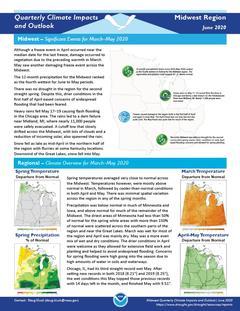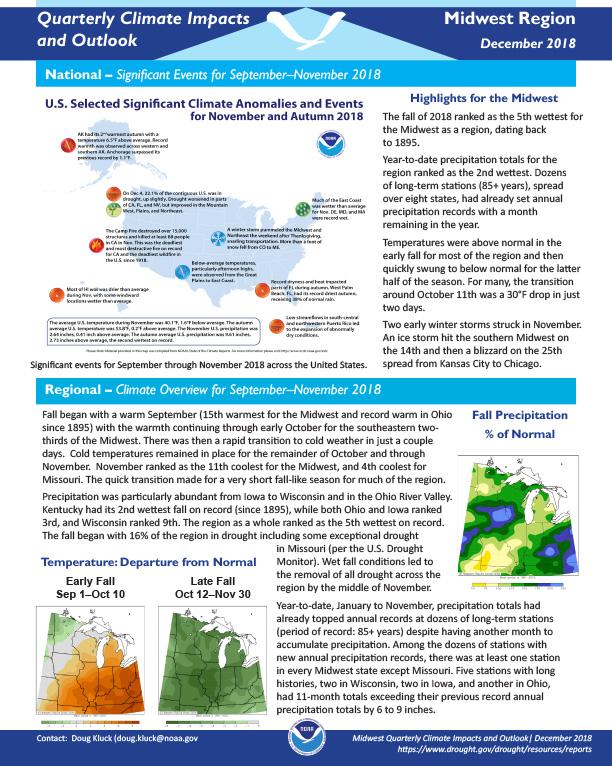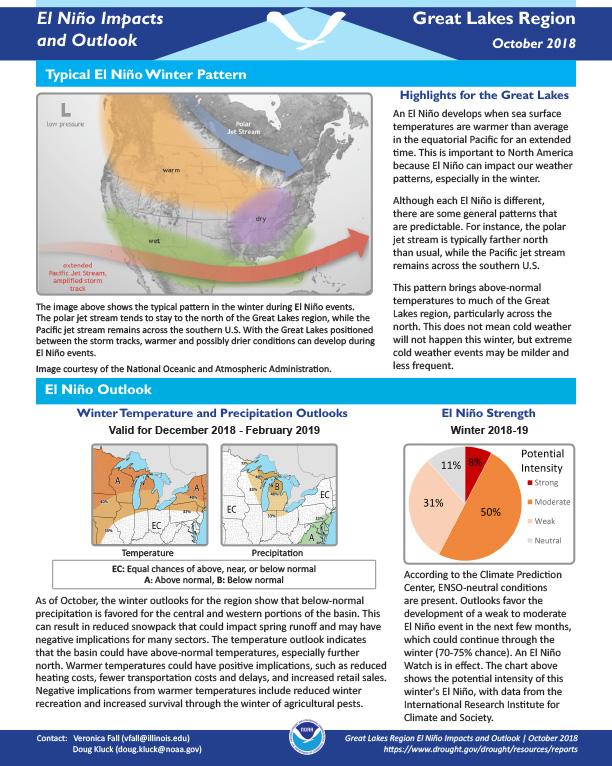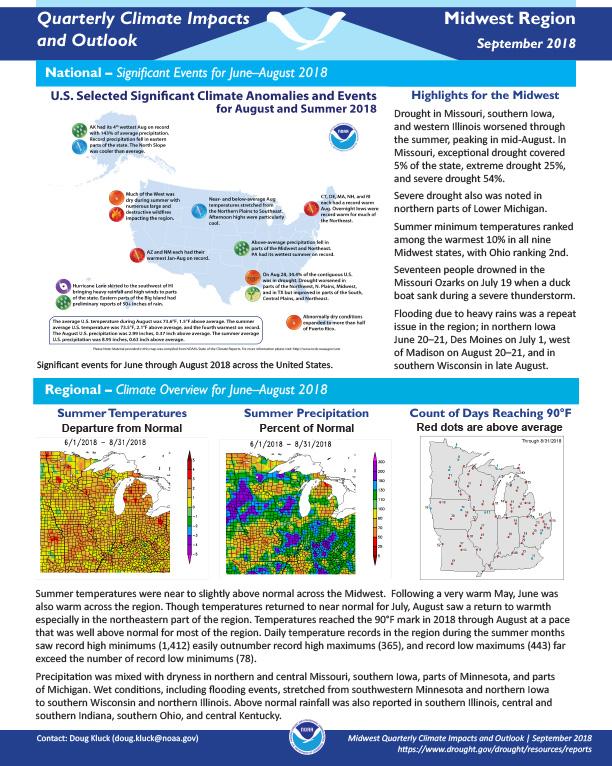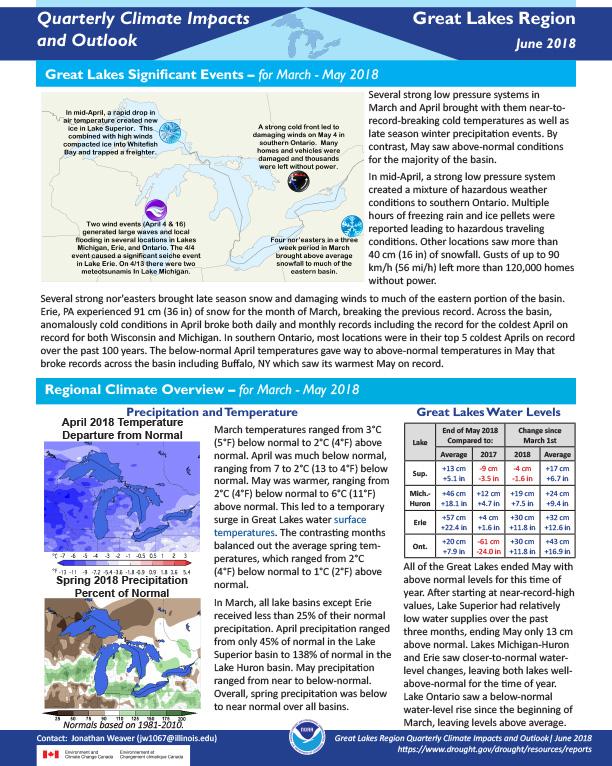For the latest forecasts and critical weather information, visit weather.gov.
Quarterly Climate Impacts and Outlook for the Midwest Region for March – May 2020. Dated June 2020.
Spring temperatures averaged very close to normal across the Midwest. Precipitation was below normal in much of Minnesota and Iowa, and above normal for much of the remainder of the Midwest.
The project, Connecting Drought Early Warning to the Decision Making Needs of Specialty Crop Producers in the Midwestern United States, developed a set of decision calendars that provide month-by-month and seasonal advice on how growers manage production of Midwestern apple, grape, cranberry, and irrigated potato crops during drought years. Fact sheets highlighting appropriate drought and climate tools for monitoring conditions during the growing seasons and beyond are also available.
Quarterly Climate Impacts and Outlook for the Great Lakes Region for September – November 2018. Dated December 2018.
Extreme shifts from unseasonably warm to record cold temperatures occurred this fall season. Autumn precipitation averaged out to be near normal.
Quarterly Climate Impacts and Outlook for the Midwest Region for September – November 2018. Dated December 2018.
Fall began with a warm September (15th warmest for the Midwest and record warm in Ohio since 1895) with the warmth continuing through early October for the southeastern two thirds of the Midwest. Precipitation was particularly abundant from Iowa to Wisconsin and in the Ohio River Valley.
Provides a definition of El Nino; the outlook for winter temperatures and precipitation; potential winter impacts; and a look back at previous El Nino winters.
NOAA’s Regional Climate Services Program created these Outlooks to inform the public about climate impacts within their respective regions. Each regional report contains easy-to-understand language, and anyone can access them through the Drought Portal at https://www.drought.gov/drought/resources/reports.
Provides a definition of El Nino; the outlook for winter temperatures and precipitation; potential winter and spring impacts; and a look back at previous El Nino winters.
NOAA’s Regional Climate Services Program created these Outlooks to inform the public about climate impacts within their respective regions. Each regional report contains easy-to-understand language, and anyone can access them through the Drought Portal at https://www.drought.gov/drought/resources/reports.
Quarterly Climate Impacts and Outlook for the Great Lakes Region for June – August 2018. Dated September 2018.
Quarterly Climate Impacts and Outlook for the Midwest Region for June – August 2018. Dated September 2018.
Drought in Missouri, southern Iowa, and western Illinois worsened through the summer, peaking in mid-August. In Missouri, exceptional drought covered 5% of the state, extreme drought 25%, and severe drought 54%. Severe drought also was noted in northern parts of Lower Michigan. Summer minimum temperatures ranked among the warmest 10% in all nine Midwest states, with Ohio ranking 2nd.
Quarterly Climate Impacts and Outlook for the Midwest Region for March – May 2018. Dated June 2018.
Regionwide temperatures in April ranked as the 2nd coldest since 1895, only 1907 was colder, and were followed by record warm temperatures in May. Regionwide temperatures rose by more than 25°F from April to May when the normal increase is just over 10°F. April also saw heavier than normal snows.
Quarterly Climate Impacts and Outlook for the Great Lakes Region for March – May 2018. Dated June 2018.
Several strong low pressure systems in March and April brought with them near-to-record-breaking cold temperatures as well as late season winter precipitation events. By contrast, May saw above-normal conditions for the majority of the basin.


